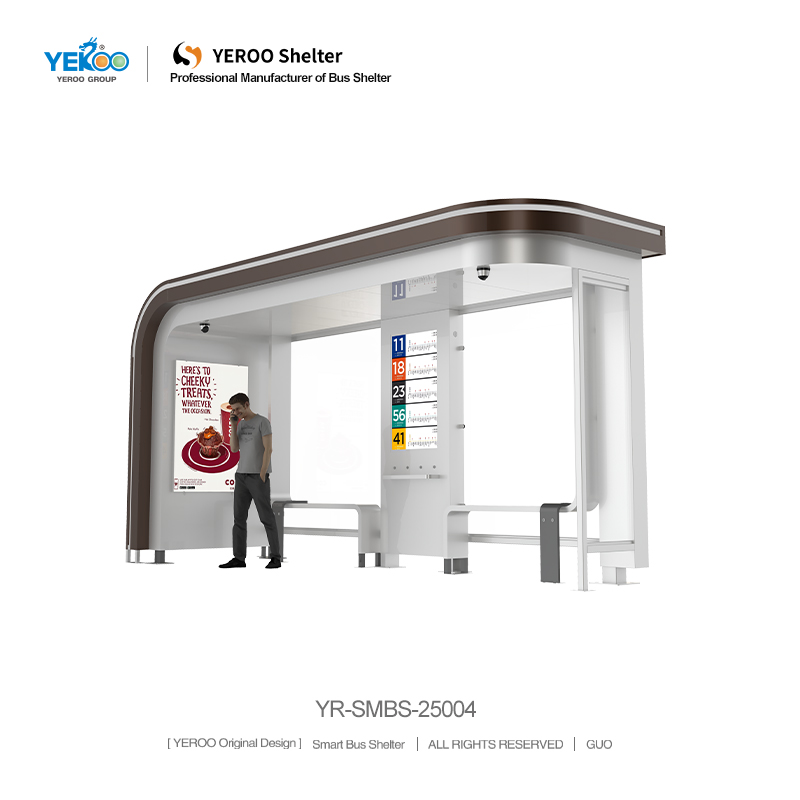Why Should Cities Invest in a Smart Bus Station for Commuters
Commuters are an important part of urban mobility, and well-designed bus stations improve their daily experiences and satisfaction with public transport, potentially even their productivity. An intelligent bus station, which incorporates technology, customer comfort, and operational efficiency, is now a necessary investment for cities looking to sustain public transportation. Yeroo Group (https://www.yeroogroup.com) is a pioneer in smart public infrastructure, and focuses on designing models that integrate customer needs. Here are some of the reasons why cities should start investing in smart bus stations.
Enhance Results in Stress Reduction.
Smart bus stations shift the focus to commuter comfort by incorporating bus station design amenities that improve the waiting experience. Yeroo Group's smart bus station design includes climate control, noise reduction, and ergonomically designed seating (including back support for long awaits) which improve the waiting experience. Smart bus stations go above and beyond the minimum standards of public transportation infrastructure by providing USB charging and clean public rest rooms. All of these features make waiting for public transport less stressful. Imagine a commuter waiting for a 7 AM bus. They could charge their phone at the station and warm themselves in a heated waiting area which would improve their overall experience.

Comfort is important, and smart bus stations help improve the experience of public transport, which makes the bus an attractive option for many commuters, lowering the number of private cars on roads.
Provide Real-Time Transit Data to Keep Commuters Informed
Not knowing when the next bus is going to come is very frustrating for commuters. A smart bus station helps solve this issue with real time transit data. Yeroo Group’s smart bus station has high visibility digital displays synced with the city’s transit system, giving real time arrival data, route changes, and options for covering route stops. Some even sync with mobile apps to give real time commutes updates on the go. Commuters whose bus is delayed can see the smart bus station providing other routes saying, “we help you cover your commute.” This helps commuters with plan changes quickly. A normal bus station has no data. Investing in a smart bus station adds data points.
Improve Safety and Security for Commuters
For commuters, especially those traveling early in the morning, late in the evening, or in bad weather, feeling safe and secure is a given. A smart bus station improves this in more than a few ways.
Yeroo Group has incorporated smart technology within their kiosk-embedded=true integrated station, upgraded the station to new safety standards. Each kiosk has emergency buttons that dial local law enforcement, emergency lights, and 24/7 surveillance. Even the location and layout of the kiosks within the station are intended to maintain safety and visibility, discouraging potential unwanted behaviors that may pose safety risks. A commuter by themself on a pathway to the bus station at 6 am will feel reassured by the cameras, lights and visibility. A parent accompanied by a child will feel reassured to know that emergency buttons are available, bridging security gaps.
Improve Operational Efficiency for Transit Systems
It’s true that smart stations benefit commuters, but the impact of smart technology within the station on commuter transit technology is positive. The station is designed with sensors to measure the flow of passengers and synchronize the bus schedules. With this information, planners will know when to increase the frequency of the buses.

For instance, consider the case where the sensor data indicates more than 200 commuters at the smart bus station between 8-9 AM. This data will alert the authorities to add more buses to the route to avoid overcrowding. This effectiveness also reduces delays, helps the buses to keep to their schedule, and makes the commute shorter for all commuters. Conventional bus stations do not provide this data, which contributes to the poorly functioning systems that cause commuters to lose faith in them.
Support the Urban Development Goals
A smart bus station will contribute to the goal of constructing greener, low-carbon-emission transit systems, which several cities are trying to accomplish. The smart bus station from Yeroo Group also incorporates eco-friendly practices to the extent that the construction will add to the use of solar panels for the digital displays and lights, LED lights, and other recycled materials. This also comes with electric vehicle charging points. For instance, solar-powered smart bus stations diminish the amount of the city’s electricity which contributes to the carbon footprint of the city. On the other hand, traditional bus stations use more energy and produce more waste. This directly helps the city in balancing their eco-friendly goals and providing more environmentally friendly stations to their commuters.
Conclusion
A smart bus station from Yeroo Group demonstrates to cities the ability to effectively support their commuters, improve their public transport, and strategically support sustainable urban mobility.
Smart bus stations improve the daily commute by providing real-time information, enhancing safety, increasing efficiency, and focusing on environmentally friendly objectives. For cities that want to keep and attract commuters, lessen traffic, and build more livable areas, these bus stations are necessary because they add continuous and worthwhile benefits for the people who use the stations and the city.


